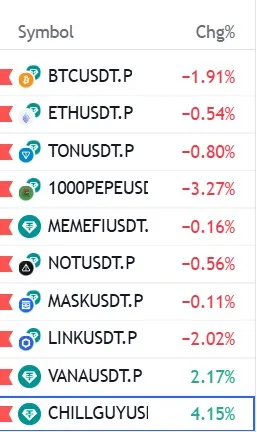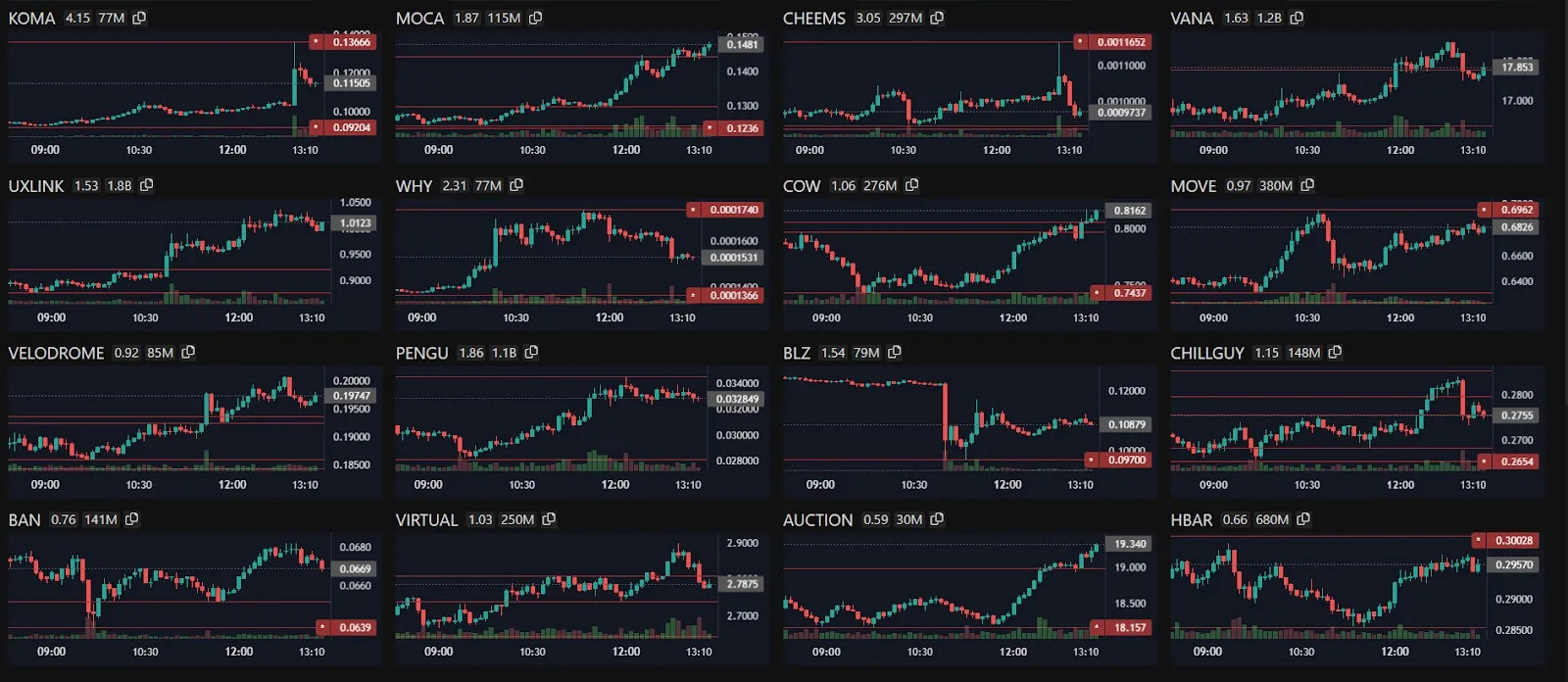
Where to invest money - Top 10 reliable investment options

In conditions of unstable economy and growing inflation, the issue of capital preservation and multiplication becomes especially important. Properly chosen investment instruments will help not only to protect savings, but also to create a stable source of passive income.
Investing - what everyone needs to know
Investing is a way to multiply capital in order to achieve financial independence and protection against inflation. Every person who decides to invest should understand the basic principles:
-
Risk and Return: The higher the return, the higher the risk of capital loss. It is important to find a balance between the two.
-
Diversification: Allocating funds between different assets reduces the risk of loss.
-
Investment horizon: The length of time you are willing to freeze your funds determines the appropriate instruments.
-
Investment objectives: Determine why you are investing - capital accumulation, passive income or crisis protection.
Without understanding these principles, an investor risks making mistakes that can lead to financial losses.
What factors need to be considered
1. investment objectives
Before selecting an instrument, it is important to understand what objective it should fulfill:
-
Capitalization of funds: increasing the value of the investment in the long term (e.g., stocks or ETFs).
-
Generating passive income: paying dividends, interest or rent (e.g. bonds, dividend stocks, real estate).
-
Capital preservation: minimizing the risk of loss and protecting against inflation (e.g., gold, currencies, deposits).
-
Short-term goals: instruments with high liquidity and predictable returns (e.g., money market or short-term bonds).
2. Investor risk profile
Determine your risk tolerance:
-
Conservative approach: minimal risk, low return (bonds, bank deposits).
-
Moderate approach: balanced risk with moderate returns (blended ETFs, diversified portfolio).
-
Aggressive approach: high yield with the possibility of significant fluctuations (stocks, cryptocurrency, startups).
3. Instrument yield
-
Expected return: determine how much return you can get on a risk-adjusted basis.
-
Real yield: take into account inflation, taxes and commissions.
-
Historical yield: analyze the dynamics of the instrument on history.
4. Risk of the investment instrument
Every instrument has its own risks:
-
Market risk: fluctuations in the price of stocks, bonds, currencies.
-
Credit risk: risk of issuer default (for bonds).
-
Liquidity risk: the difficulty of selling an asset quickly without loss.
-
Currency risk: changes in exchange rates when investing in foreign assets.
-
Inflation risk: the depreciation of money if the yield on an instrument is below inflation.
-
Interest rate risk: changes in rates affect the value of bonds and deposits.
5. Investment term
The choice of instrument depends on your investment horizon:
-
Short-term (up to 1 year): deposits, money market funds, short-term bonds.
-
Medium-term (1-5 years): corporate bonds, balanced funds, stocks of large stable companies.
-
Long-term (5+ years): growth stocks, index funds (ETFs), real estate, retirement savings.
6. Liquidity of the instrument
Liquidity shows how quickly you can sell an instrument and get your money back without losses.
-
High liquidity: stocks on major exchanges, currencies, deposits with the possibility of early withdrawal.
-
Medium liquidity: bonds, ETFs.
-
Low liquidity: real estate, venture investments, shares of small companies (low-cap).
7. Taxation
Figure out how the income from the instrument will be taxed:
-
Dividend tax: most countries withhold a percentage of dividend payments.
-
Capital gains tax: levied when the asset is sold at a profit.
-
Benefits and deductions: some instruments (e.g. pension savings or IIS in Russia) give tax benefits.
8. Commissions and costs
Each investment instrument may be accompanied by additional costs:
-
Broker or management company commissions: when buying/selling shares, bonds or fund units.
-
Fund management fees: annual fees for ETF or mutual fund managers.
-
Hidden costs: spreads (difference between buying and selling), exchange rate differences, currency conversion fees.
9. Capital Protection
Assess the reliability of the instrument:
-
Government guarantees: deposits are often insured by the government up to a certain amount.
-
Issuer credit rating: high ratings (AAA) reduce the risk of default on bonds.
-
Company/fund stability: when selecting stocks or funds, assess the financial health and reputation of the issuer.
10. Infrastructure and accessibility
-
Brokerage account or platform: choose a reliable intermediary with a user-friendly interface and access to the right markets.
-
Access to international markets: whether you invest locally or plan to access global exchanges.
-
Minimum entry amount: for example, buying real estate requires a large investment, while stocks can be started with small amounts.
11. economic and market conditions
-
Economic cycle: during the growth phase of the economy, stocks are preferred, during the downturn phase, protective assets (gold, bonds) are preferred.
-
Interest rates: rising rates make bonds more attractive and stocks less attractive.
-
Inflation: protective instruments such as gold and real estate help preserve capital in a high inflation environment.
12. Diversification
You should not invest all your funds in one instrument:
-
Asset balance: allocate your funds in different types of assets (stocks, bonds, real estate).
-
Geographic diversification: invest in different countries to reduce regional risks.
-
Industry diversification: choose companies from different industries.
Where to invest your money

There are many options for investing money, each of them has its advantages, disadvantages and entry threshold, let’s consider the 10 most promising options:
Trading bots
Trading bots are automated programs that execute trades on exchanges according to predetermined strategies. They allow you to minimize the human factor and optimize cryptocurrency trading.
Veles Finance trading bots have the following advantages:
-
Trade automation: Bots analyze the market independently and make trades 24/7.
-
Customizable strategies: Users can choose ready-made strategies or create their own.
-
Risk minimization: Bots use risk management algorithms to reduce losses.
-
Efficiency: High speed of reaction to market changes ensures maximum profitability.
Thus, trading bots are modern and reliable tools for gaining profit in the cryptocurrency market, which are suitable for both newcomers in cryptocurrencies and for investors and traders who already have experience in this field.
Bank deposits
Bank deposits are a traditional way to save money and earn a fixed income. However, deposit rates are often lower than the inflation rate, which makes this instrument less profitable.
Pros: reliability, fixed income.
Cons: low yield, dependence on the banking system.
Shares
Buying shares of companies allows you to profit from the growth of their value and dividends. However, the stock market is subject to volatility and requires deep analysis.
Pros: possibility of high profitability, dividends.
Cons: risks of losses, the need for knowledge and experience.
Bonds
Bonds are a more conservative instrument than stocks. They provide fixed income, but their yield is lower.
Pros: stability, predictable income.
Minuses: low yield, dependence on inflation.
Fiat currency
Deposits in fiat currency (dollars, euros) protect capital from devaluation of the national currency. However, the currencies themselves are subject to inflation and exchange rate fluctuations.
Pros: high liquidity, protection from currency risks.
Minuses: low profitability.
Cryptocurrency

1. Cryptocurrencies as assets for long-term holding (holding)
Holding involves buying a cryptocurrency and holding it for a long time, waiting for the price to rise.
Advantages:
-
High potential returns.
-
Suitable for those who are not ready to actively engage in trading.
Disadvantages:
-
High volatility.
-
Requires patience and willingness to take long-term risks.
2. Crypto exchange trading (active trading)

Investors can engage in active trading by taking advantage of daily price fluctuations.
Advantages:
-
Opportunity to capitalize on both the rise and fall in value.
-
High liquidity.
Disadvantages:
-
Requires market analysis skills.
-
Implies high risks of loss.
3. Decentralized Finance (DeFi)
DeFi offers investments through staking, farming and liquidity pools.
Benefits:
-
Passive income opportunity.
-
High interest rates compared to traditional deposits.
Disadvantages:
-
Vulnerability to hacking attacks.
-
Risks associated with the instability of smart contracts.
4. Investing in Stablecoins
Stablecoins, such as USDT or USDC, provide stability by being pegged to fiat currencies.
Advantages:
-
Less volatility.
-
Suitable for capital preservation.
Disadvantages:
-
Low potential growth in value.
-
Dependence on stability of collateral.
5. Investing through crypto trading bots
Automated trading bots, such as solutions from Veles Finance, allow for automated trading.
Advantages:
-
Suitable for beginners.
-
Minimizes human error and involvement in the process.
Disadvantages:
-
Dependence on bot settings and algorithm.
-
Necessity to choose a reliable provider.
6. Non-Futurable Tokens (NFT)
The NFT market is interesting for investors willing to invest in digital art, game assets and collectibles.
Advantages:
-
Uniqueness of the asset.
-
Possibility of significant growth in the value of rare tokens.
Disadvantages:
-
Difficulty in estimating the real value.
-
High speculativeness.
Real estate
Real estate is a solid asset for long-term investment. However, this option requires significant initial capital and management time.
Pros: stability, passive rental income.
Cons: low liquidity, high maintenance costs.
Precious metals
Gold and silver are used to protect capital in times of crisis. The yield of this asset is low, but stable.
Pros: reliability, protection against inflation.
Cons: low yield.
Sublease
Subletting is renting a property and then renting it out at a higher price. This requires active management, but can bring a stable income.
Pros: good income with minimal capital.
Minuses: high risks and management costs.
Business
Starting your own business can bring high returns, but requires a significant investment of time and money.
Pros: potential for high returns.
Cons: high risk and difficult to manage.
Common mistakes when investing
1. lack of a financial plan
Without a clear understanding of investment goals and strategy, people act chaotically.
How to avoid:
-
Make a financial plan considering income, expenses, savings and goals.
-
Determine how much you are willing to invest without compromising your budget.
-
Set short-term and long-term goals, such as buying a home or building your retirement.
2. Investing with your last money
Some investors invest money they may need in the near future, which increases the risk of financial hardship.
How to avoid:
-
Invest only the amount you are willing to lose.
-
Leave a “safety cushion” - savings for 3-6 months of your life.
-
Do not use loans for investments.
3. Insufficient diversification
A common mistake is to invest all your money in one asset or industry.
How to avoid:
-
Allocate capital among different asset classes: stocks, bonds, real estate, cryptocurrency, etc.
-
Consider the risk and correlation between assets. For example, real estate and stocks may behave differently in a crisis.
4. Ignoring analysis and information
Making decisions without thoroughly reviewing information often leads to losses.
How to avoid:
-
Study the market, company or project you are investing in.
-
Use fundamental and technical analysis tools.
-
Follow financial news on a regular basis.
5. Panic during market fluctuations
Many investors tend to sell assets when their value drops temporarily, locking in losses.
How to avoid:
-
Follow your financial plan and strategy.
-
Remember that falling prices don’t always mean a loss of value in the long run.
-
Study market history to understand up and down cycles.
6. The desire to make a quick buck
Trying to find a “magic” investment that will instantly increase capital is rarely successful.
How to avoid:
-
Avoid schemes that promise guaranteed high returns.
-
Evaluate the real risks and opportunities of the asset.
-
Remember that stable capital growth is a long-term process.
7. Misunderstanding of taxes and legislation
Many beginners forget to consider the tax liabilities and legal nuances of their investments.
How to avoid:
-
Familiarize yourself with your country’s tax laws.
-
Consult with lawyers and tax professionals.
-
Take taxes into account when calculating profits.
8. Neglect of risk management
Lack of risk management makes investments vulnerable to market fluctuations.
How to avoid:
-
Determine the level of risk you are willing to accept.
-
Set stop losses to limit losses.
-
Regularly review your portfolio and balance it.
9. Storing assets in unsecure locations
Asset safekeeping is an important aspect of successful investing. Improper storage can lead to their loss.
How to avoid:
-
For securities, use specialized depositories.
-
For cryptocurrencies, use hardware or cold wallets.
-
Back up important data regularly.
10. Lack of a clear strategy
Investors without a strategy tend to succumb to emotions and make chaotic investments.
How to avoid:
-
Define a time horizon (short-term or long-term investments).
-
Choose a strategy: capital growth, passive income or preservation of funds.
-
Regularly review your strategy depending on market conditions and life changes.
11. lack of financial literacy
Lack of basic knowledge about financial markets and instruments reduces the chances of successful investing.
How to avoid:
-
Study financial literacy materials.
-
Read books and take courses on investing.
-
Talk to professional investors and financial advisors.
Conclusion
Investing is a reliable way to protect and multiply capital. Modern tools such as cryptocurrencies and trading bots provide unique opportunities to generate income. The main thing is to approach investing consciously, consider the risks and diversify your investments.
FAQ
1. How much money do I need to start investing?
Each type of investment has its own acceptable entry threshold. The most optimal are trading bots that allow you to start trading with 1$.
2. How risky is it to invest in cryptocurrencies?
Cryptocurrencies have high volatility, but with the right approach they can bring significant profits.
3. What is a trading bot and how does it work?
A trading bot is a program that automatically trades assets on the exchange according to set parameters.
4. What are the most reliable instruments for investing?
Bonds, bank deposits and real estate are considered to be the most reliable, but their yield is much lower than that of cryptocurrencies.
5. Why is it important to diversify investments?
Diversification reduces risks and protects the capital from losses in case one of the assets falls.